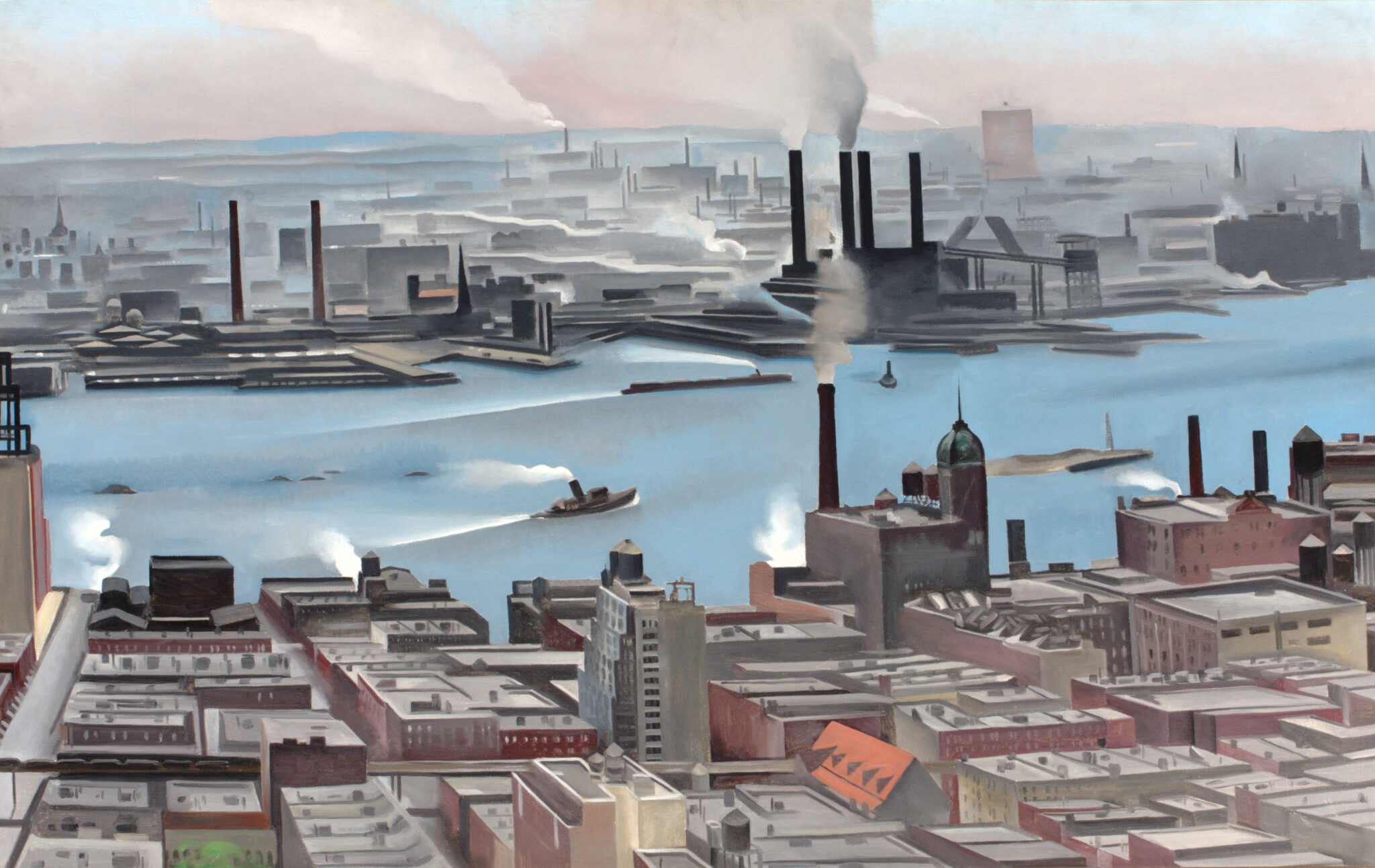
Famed for her images of flowers and Southwestern landscapes, Georgia O’Keeffe also spent several years exploring the built environment of New York City. This period, beginning in 1924, when she moved to the newly built Shelton Hotel, inspired a five-year phase of energetic experimentation. The tallest residential skyscraper in the world at that time, the Shelton provided O’Keeffe with soaring heights and expansive city views that profoundly influenced her work. This unique period of O’Keeffe’s career is now the focus of a highly anticipated exhibit at the Art Institute of Chicago.
Early Life and Education
Georgia Totto O’Keeffe was born in Sun Prairie, Wisconsin, to a family of dairy farmers. By the age of 12, she had already decided to become an artist. She studied at the School of the Art Institute of Chicago from 1905 to 1906, but her education was interrupted by a bout of typhoid fever. In 1907, she resumed her studies in New York with William Merritt Chase at the Art Students League. During this period, she was exposed to works by Rodin and Matisse at Alfred Stieglitz’s avant-garde gallery, 291.
Career Development
In 1908, financial necessity forced O’Keeffe to pause her painting career. She worked as a commercial artist in Chicago, designing lace and embroidery. Over the next decade, she traveled extensively and taught art in Virginia, South Carolina, and Texas. In 1912, she studied drawing at the University of Virginia, adopting a more experimental approach influenced by Japanese prints. By 1914, she returned to New York to study with Arthur Wesley Dow at Columbia University, delving deeper into European modernism and abstraction.
Breakthrough and New York Inspiration
O’Keeffe’s big break came in 1918 when Stieglitz organized a solo show of her abstract charcoal drawings and watercolor landscapes. This marked a pivotal moment in her career. Between 1918 and 1949, O’Keeffe lived primarily in Manhattan. She married Stieglitz in 1924, and they moved into the Shelton Hotel. The urban landscape of New York inspired some of her most iconic works, such as “The Shelton with Sunspots, N.Y.” (1926), “East River from the Shelton” (1927-28), and “Radiator Building—Night, New York” (1927).
Financial Independence and Continued Success
By 1927, O’Keeffe’s art sales had become sufficient to support her as an artist. Despite spending most summers in Lake George, New York, she began traveling to New Mexico in 1929, where the stark landscape provided a new source of inspiration. Her financial independence allowed her to focus entirely on her art.
Lasting Legacy and Art Institute Connection
O’Keeffe moved permanently to New Mexico in 1949 after settling Stieglitz’s estate. She continued to produce significant works until her death in 1986 at the age of 98. The Art Institute of Chicago, which hosted her first museum retrospective in 1943, received a major gift from O’Keeffe in 1949: the Alfred Stieglitz Collection, which included works by various artists as well as her own. This exhibit underscores O’Keeffe’s profound impact on American art and her continuous innovation throughout her career.
Visit the Exhibit
The Art Institute’s new exhibit offers a unique opportunity to explore O’Keeffe’s dynamic and evolving relationship with New York City. It showcases how her time in the city shaped her artistic vision and contributed to her legacy as one of America’s most innovative artists. It not only highlights O’Keeffe’s artistic achievements but also her resilience and ability to overcome challenges, making her an enduring figure in American art history.
Plan your visit today and delve into the world of Georgia O’Keeffe, where the urban and natural landscapes converge in spectacular ways. For more information and to purchase tickets, visit the Art Institute of Chicago’s official website.


